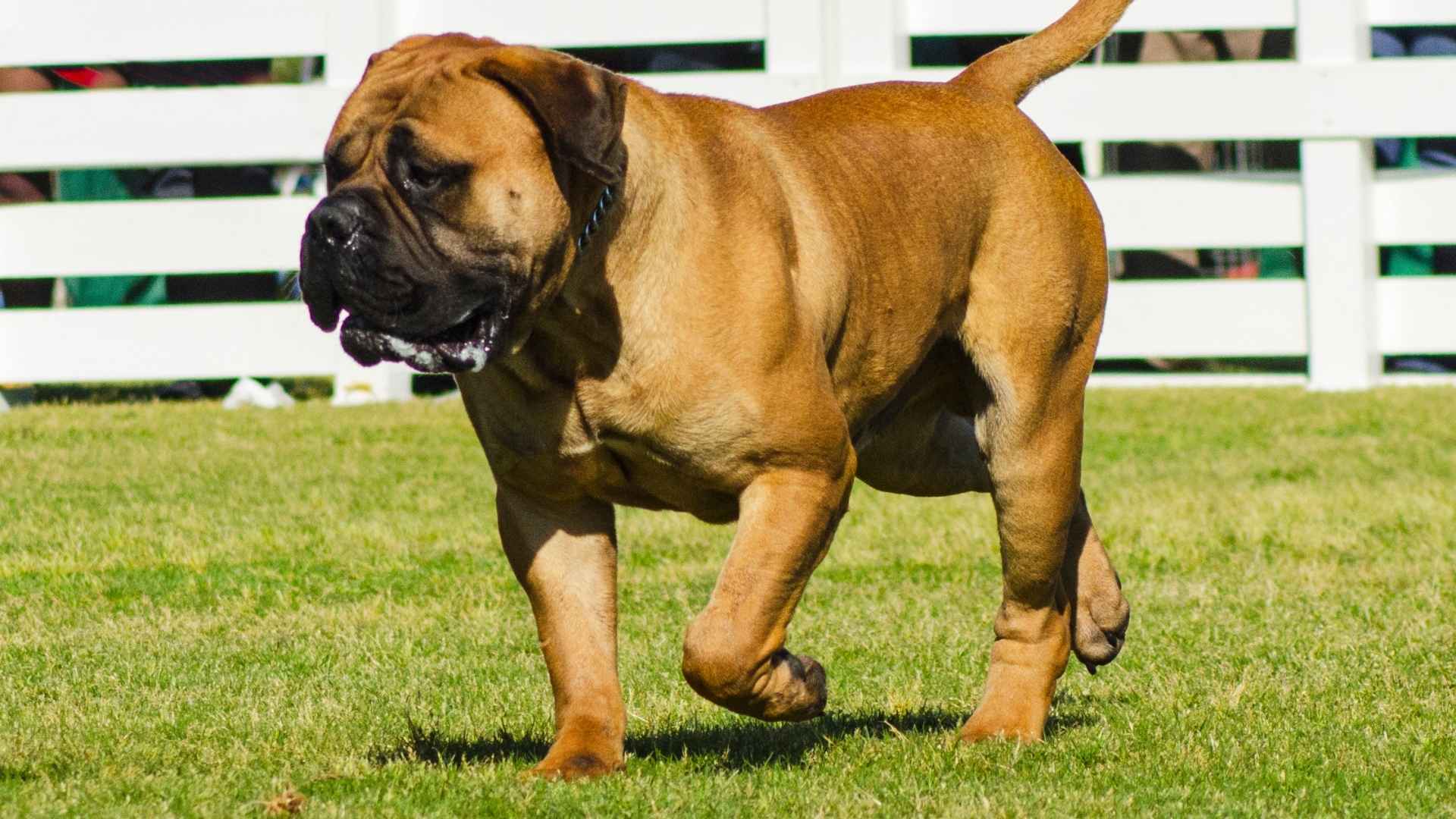If you’ve ever been caught off guard by a surprise splash of drool mid-hug, you’ve probably encountered one of the canine world’s most slobbery citizens.
These dogs don’t just salivate—they cascade. Their mouths seem like miniature waterfalls, and their slobber is a signature part of their charm. Whether they’re excited, nervous, or just finished a big drink of water, they let it flow. And while the wet kisses can be endearing, the trails of drool on your furniture, clothing, and sometimes your face—well, those are part of the package.
But it’s not all mess and mops. These dogs are often affectionate, laid-back, and full of personality. Their excessive salivation is often tied to physical features like loose lips, heavy jowls, or big mouths, all of which contribute to their undeniable character.
However, future owners should know what they’re signing up for—a towel by the door, a wipe down after every walk, and maybe even a dedicated “drool zone” in the house. Let’s dive into the reasons behind heavy drooling and how to live happily (and hygienically) with these delightfully damp dogs.
Excessive Salivation Dog Breeds
1. Bulldog
Let’s start with the Bulldog. This breed looks like a tough guy—wrinkled face, strong build, deep, soulful eyes—but underneath all that muscle and squish is a total marshmallow. Bulldogs are affectionate, lazy, and would rather nap on your lap (or your face) than chase a ball.
But here’s the trade-off: Bulldogs drool like it’s their part-time job. Their adorable, smushed faces are designed in a way that doesn’t exactly support neat swallowing. Add in those floppy jowls and you’ve got a slobbery masterpiece.
Why They Drool
Their short snout causes them to breathe through their mouths more often.
Their loose lips can’t contain the drool once it gets going.
They’re always dreaming about food. Always.
Bulldogs are laid-back and affectionate, with a calm demeanor that makes them excellent companions. They may not be the most active, but they’re loyal and loving, always happy to relax on the couch with you. While they’re known for their gruff appearance, their hearts are soft, and they enjoy being around their human family.
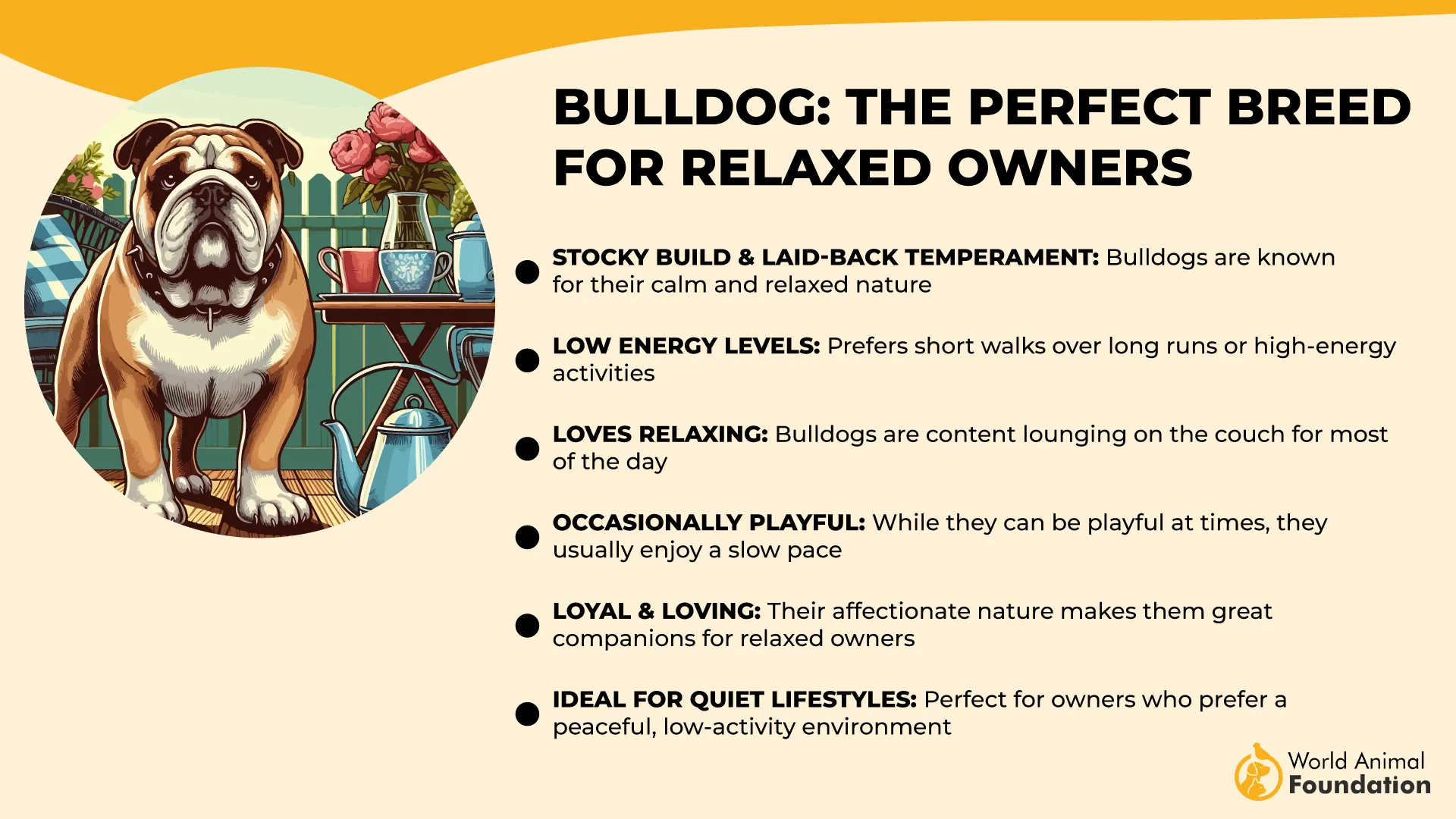
Cleanup Tip: Keep a “drool station” with paper towels by the door. You’ll use it a lot.
2. Saint Bernard
Ah, the Saint Bernard. Majestic. Gentle. Massive. And gloriously slobbery.
These dogs are truly legendary. Saint Bernards were originally bred to save lost travelers in the snowy Alps, known for their strength, intelligence, and unwavering loyalty. However, their heroic nature is paired with a less glamorous feature—an endless stream of drool.
When a Saint Bernard shakes their head, it’s not just a shake—it’s a splash zone. Your walls, furniture, and unsuspecting guests? All fair game.
PDSA claims that Saint Bernards are listed as a ‘Category Three’ breed by The Kennel Club, indicating they are prone to certain health issues related to their physical appearance, which may include factors in their medical history. These concerns often involve their skin folds, eyes, hind legs, and jaw or dental health.
Why They Drool
They have gigantic lips and cheeks that trap and then release saliva.
Their sheer size means they produce more saliva than smaller dogs.
They often get hot, and drooling helps them cool down.
Saint Bernards are known for their gentle giant persona. They’re friendly, patient, and incredibly affectionate, especially with children. Their calm demeanor and protective nature make them great family dogs. Despite their large size, they’re surprisingly easy-going and enjoy cuddling and being around their loved ones.
Cleanup Tip: Bandanas tied around the neck can help catch some of the runoff (keyword: some).
3. Neapolitan Mastiff
Meet the Neapolitan Mastiff—a majestic beast that looks like it walked straight out of an ancient Roman battlefield and directly into your living room… with a trail of drool behind it.
These dogs are famous for their massive size, deeply wrinkled skin, and protective instincts. But they’re also drool royalty, second only to maybe a Saint Bernard in their ability to transform any room into a splash zone.
Why They Drool
Heavy, loose lips and folds trap saliva until gravity takes over.
They get excited easily (especially at mealtimes).
They pant to regulate temperature, and that equals instant faucet mode.
The Neapolitan Mastiff is a calm, loyal, and protective dog. They’re generally relaxed and affectionate with their family, but can be a little aloof with strangers. Their loyalty and protective instincts make them excellent guard dogs, but they’re also surprisingly gentle and affectionate with those they trust.
Cleanup Tip: Baby wipes and absorbent towels are your best friends. Also, always check your walls before guests arrive.
4. Great Dane
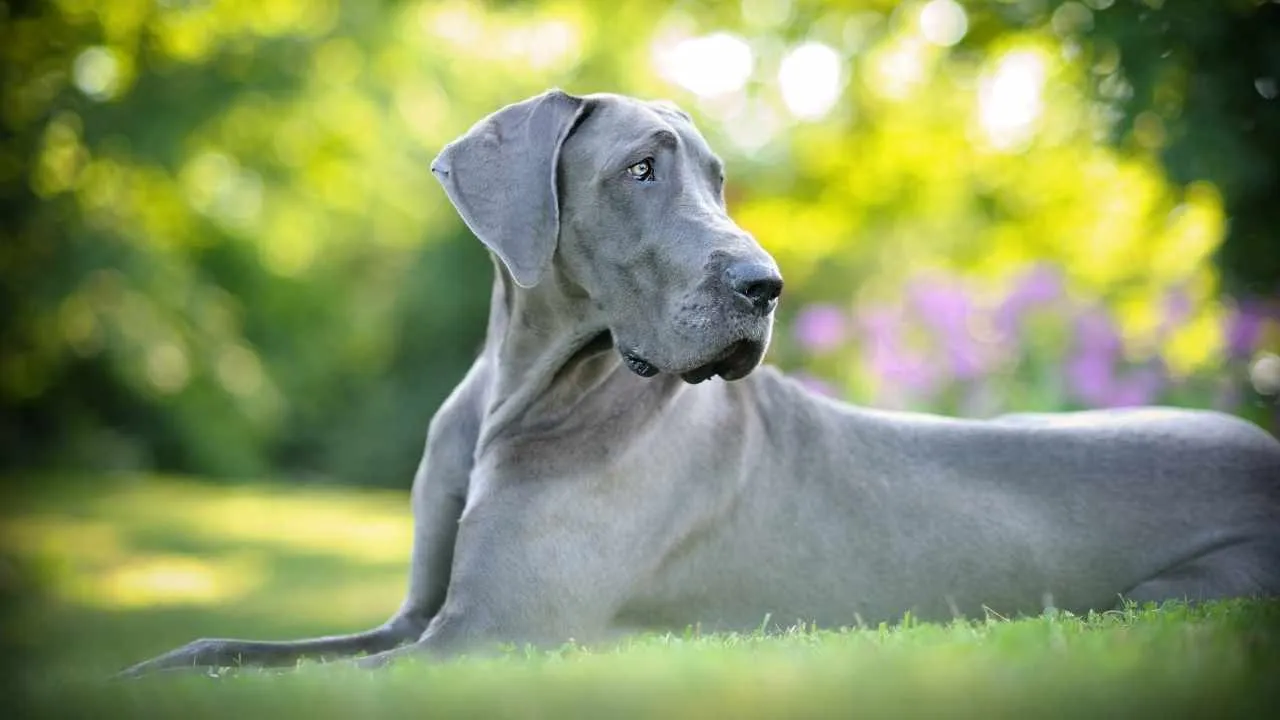
You might not expect it from the elegant, statuesque Great Dane, but beneath that tall, noble exterior lies a secret: these dogs can drool with the best of them.
Often called the “Apollo of dogs,” Great Danes are gentle giants—tall enough to rest their head on your dining table and polite enough to pretend they aren’t interested in your steak (spoiler: they are).
While they don’t always drool as much as Bulldogs or Saints, when they do, it’s usually a wet, jaw-wiggling spectacle.
Why They Drool
They have loose lips that hang off their giant faces.
Their massive size means more saliva production.
If there’s food nearby, the mouth faucet will turn on.
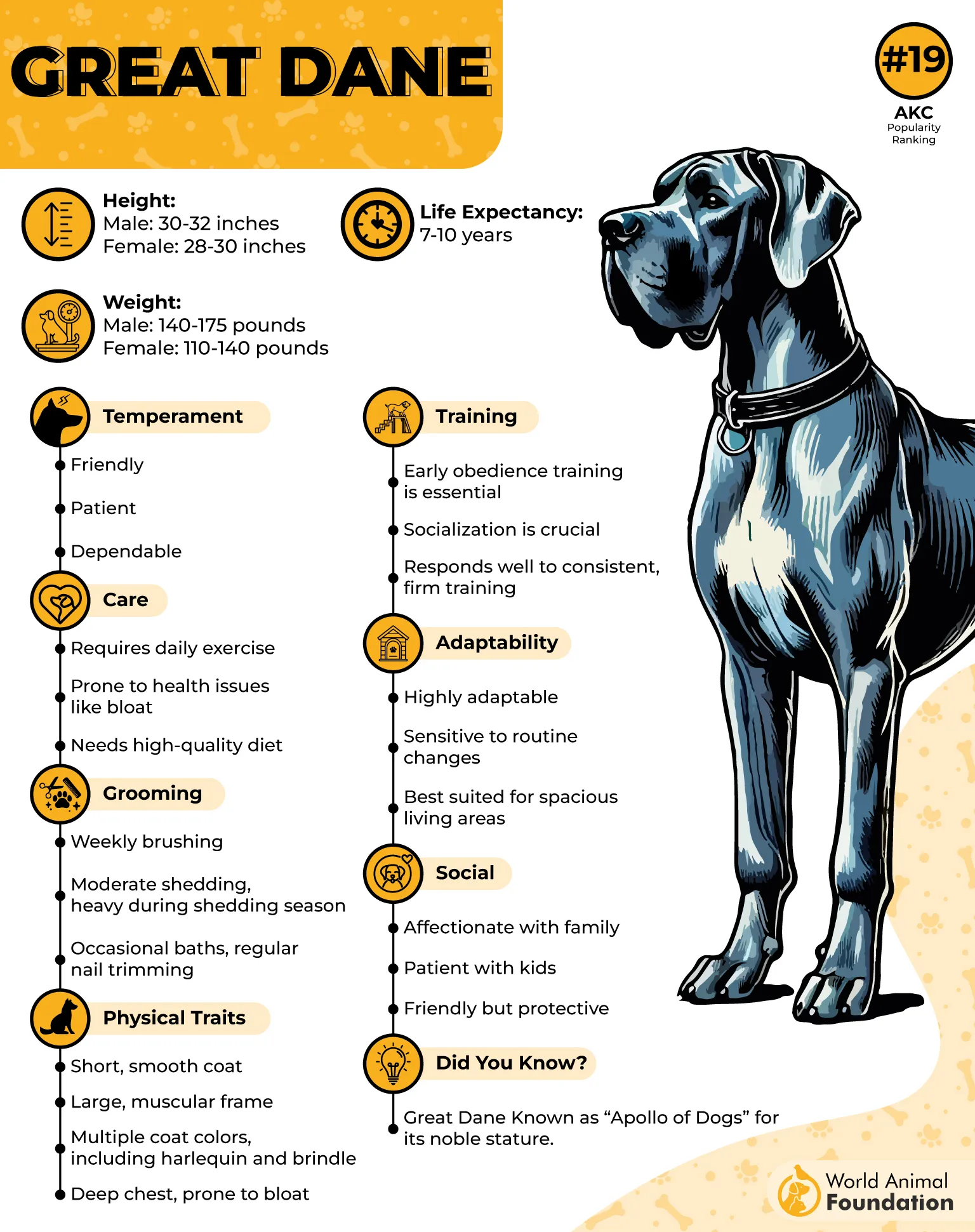
They’re goofy, lovable, and surprisingly cuddly—think of a horse trying to be a lapdog. Despite their imposing size, they are incredibly affectionate and often think of themselves as lap dogs. They tend to be patient, quiet, and good with children, making them a great fit for families looking for a gentle giant.
Cleanup Tip: Keep a towel near their water bowl and another one near your face. For safety.
5. Bloodhound
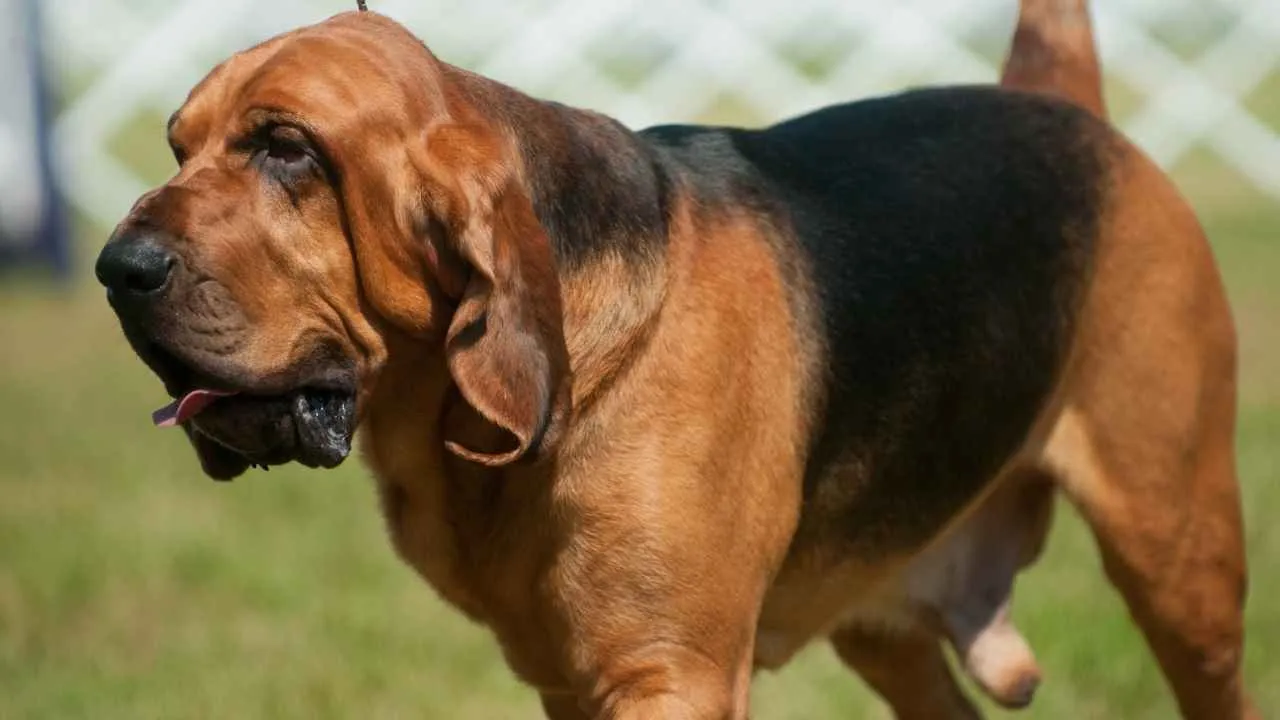
The Bloodhound may not win any prizes for elegance, but they sure makes up for it with their sleuthing skills and legendary drool. With their droopy ears and wrinkled skin, these scent detectives are great at one thing—leaving a trail of slobber everywhere they go. Whether they’re tracking down a scent or just wagging their tail, the drool is inevitable.
Known for their exceptional tracking abilities, these hunting dogs are usually calm and patient, but they do have a strong sense of determination when they’re on a scent trail. While they may not be as high-energy as some breeds, they’re highly affectionate and enjoy spending time with their families.
As noted by PetMD, Bloodhounds use their distinctive howling, or “baying,” to communicate with their pack when they’re apart or feeling isolated. However, this trait can be troublesome in city environments, as they are among the most vocal dog breeds.
Why They Drool
Those droopy jowls and heavy lips trap saliva that is bound to fall.
Their nose-to-ground sniffing habits lead to mouth-opening moments where the drool just can’t be contained.
Their excitement levels spike when they get a whiff of something interesting, triggering the flood of saliva.
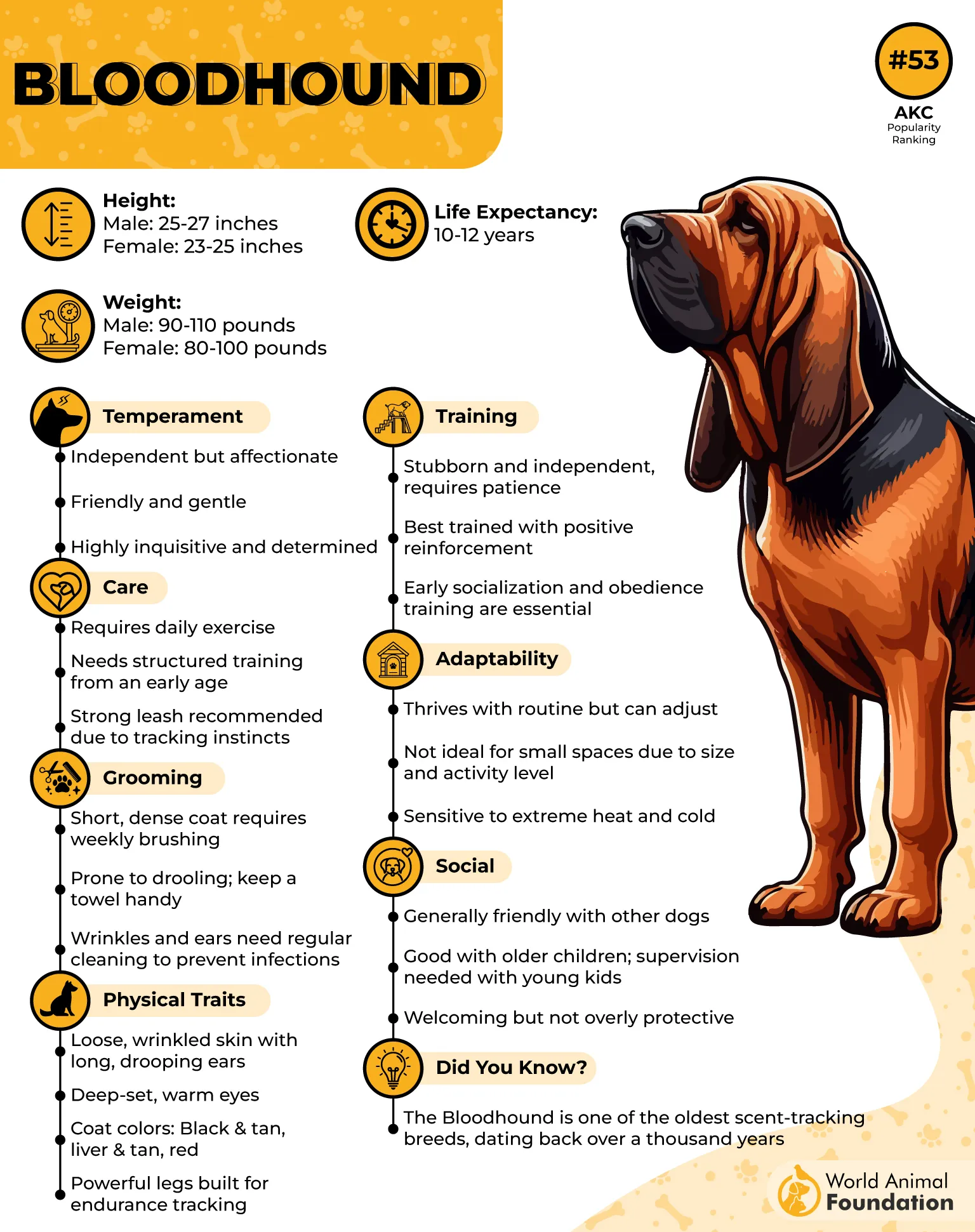
However, they can be a bit stubborn at times, especially if they catch an intriguing scent—so be prepared for a dog who might get distracted easily!
Cleanup Tip: Keep a mop or towel nearby, and don’t be surprised if you need to clean up after every sniffing session. If you’re a neat freak, you might want to prepare for some extra cleaning!
6. Boxer
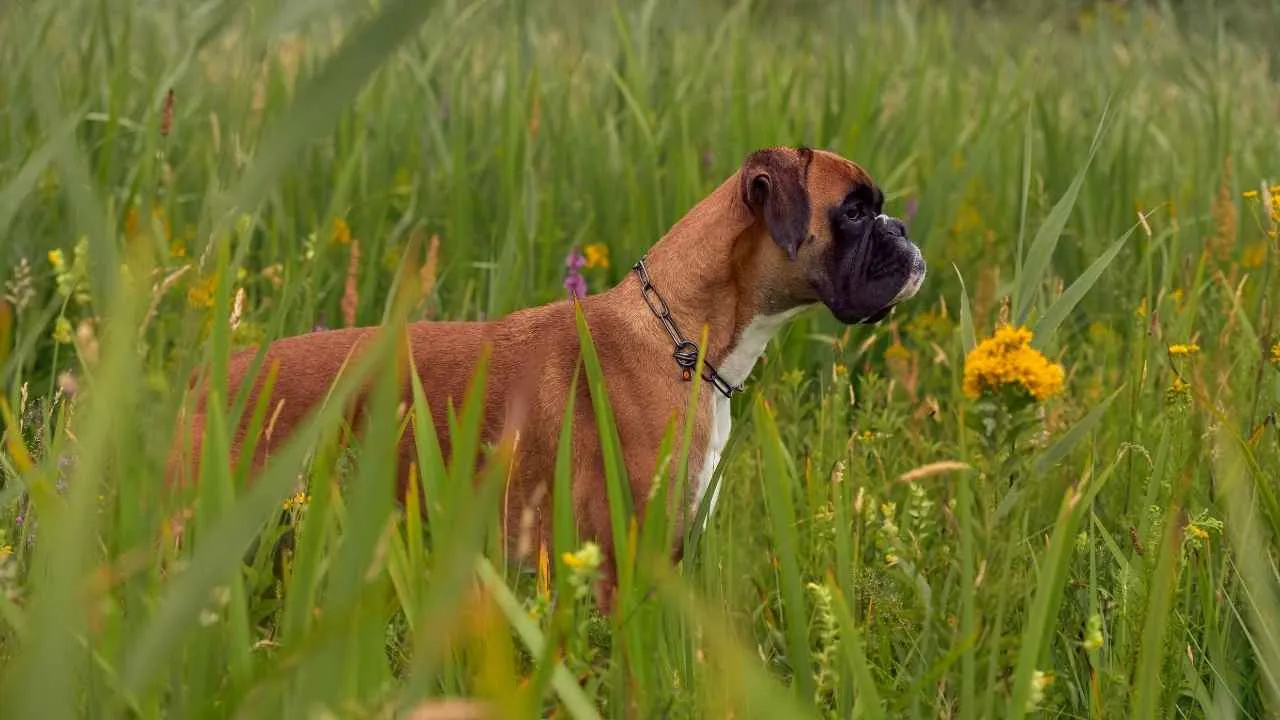
Boxers are dynamic, energetic, and incredibly affectionate—they’re also slobber fountains. These dogs are constantly moving and shaking, and with all that energy comes a good amount of saliva. Whether they’re excited to see you after a long day or playing fetch in the yard, Boxers can send a wave of drool in every direction.
Boxers are more than just a pretty face with a wrinkled snout—they’ve got the drool to prove it. Their short muzzles may not allow them to contain their excitement (or their fluids), and before you know it, you’re sporting a little bit of that Boxer love on your shirt.
Why They Drool
Their squishy faces and short snouts make it hard for saliva to stay in.
A wagging tail + a wagging tongue = non-stop drool.
They tend to drool more when they’re anticipating something fun, like a walk or playtime.
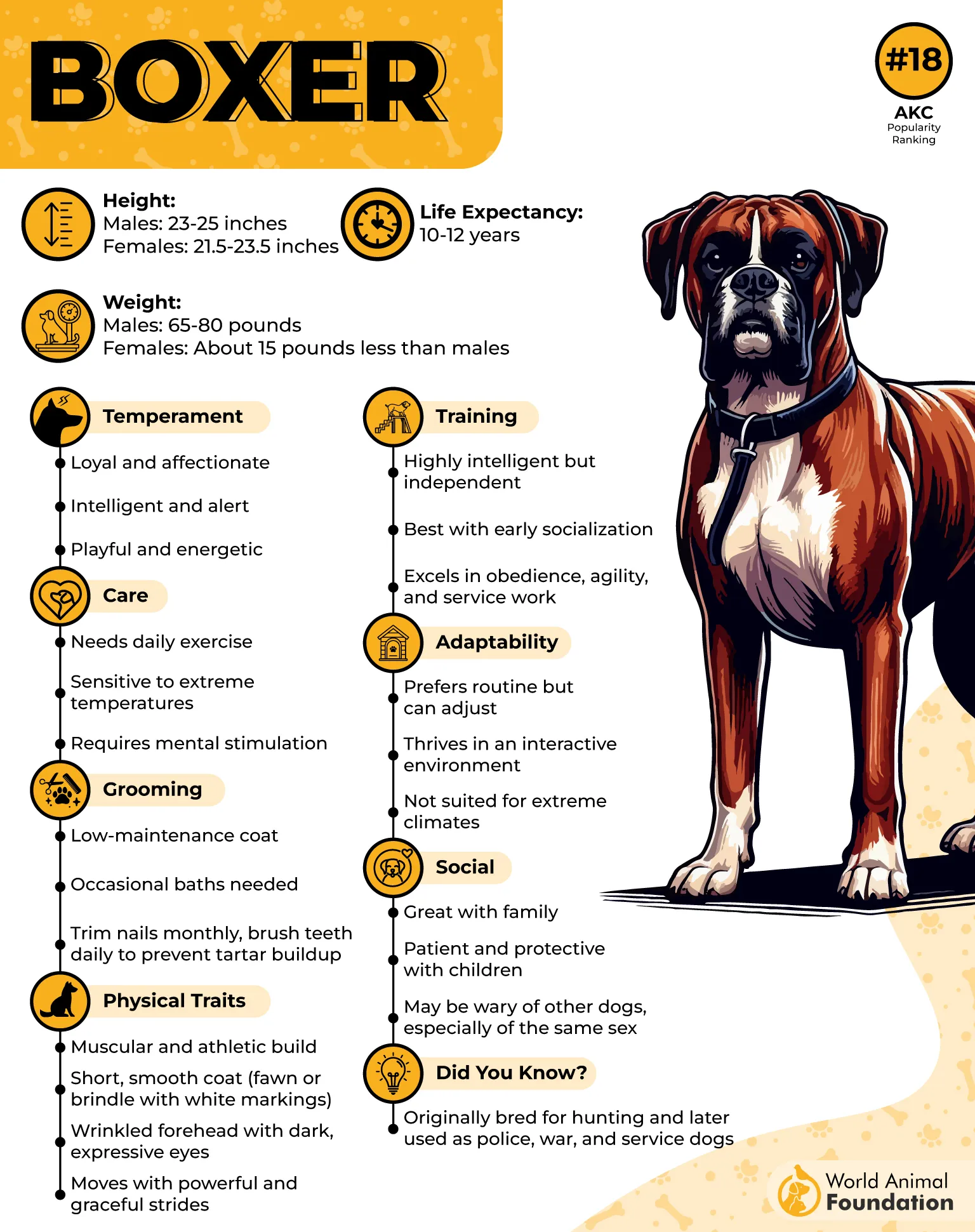
Boxers are known for their high energy, playfulness, and loving nature. They are incredibly loyal and enjoy being the center of attention. Friendly and intelligent, they’re also known for their goofy personalities, often acting like clowns to entertain their families. Boxers are active dogs who need mental stimulation and physical exercise.
Cleanup Tip: A bandana around their neck helps catch some of the drool, but don’t count on it for everything. Invest in waterproof clothing if you plan on giving them lots of love!
7. Basset Hound
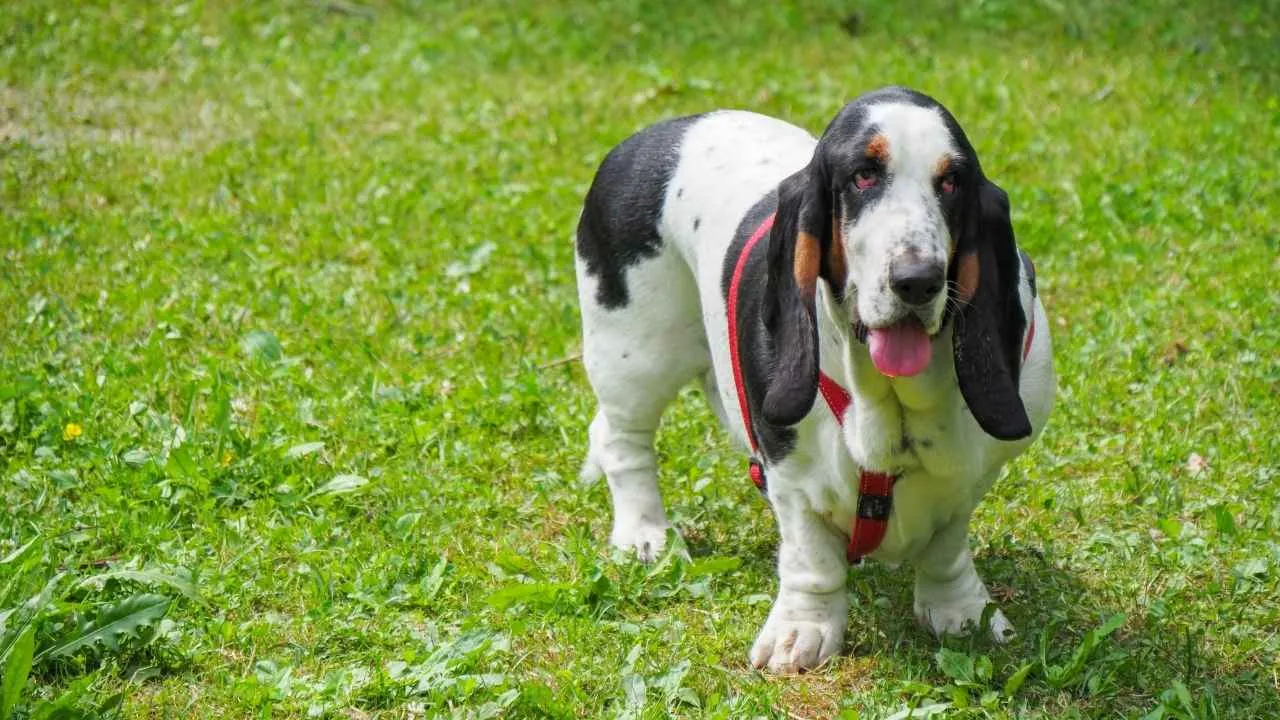
The Basset Hound may be short in stature, but it’s giant when it comes to drool. With their long ears, soulful eyes, and droopy expressions, Basset Hounds look like they’ve been through a lot—but no one’s been through more drool than these guys.
Imagine a dog that’s constantly leaving a wet trail behind as they explores every nook and cranny of your home (and your shoes). You’ll need plenty of tissues or cloths around, but their laid-back nature and soulful eyes will make it all worth it. Basset Hounds are the type of dogs that love to curl up next to you—and also on your drool-soaked pillow.
Why They Drool
Those long ears and droopy jowls do a great job at catching (and then releasing) saliva.
Their eager sniffing and droopy faces lead to a lot of mouth-opening moments—cue the drool.
They tend to drool more when they’re hungry or smelling something interesting.
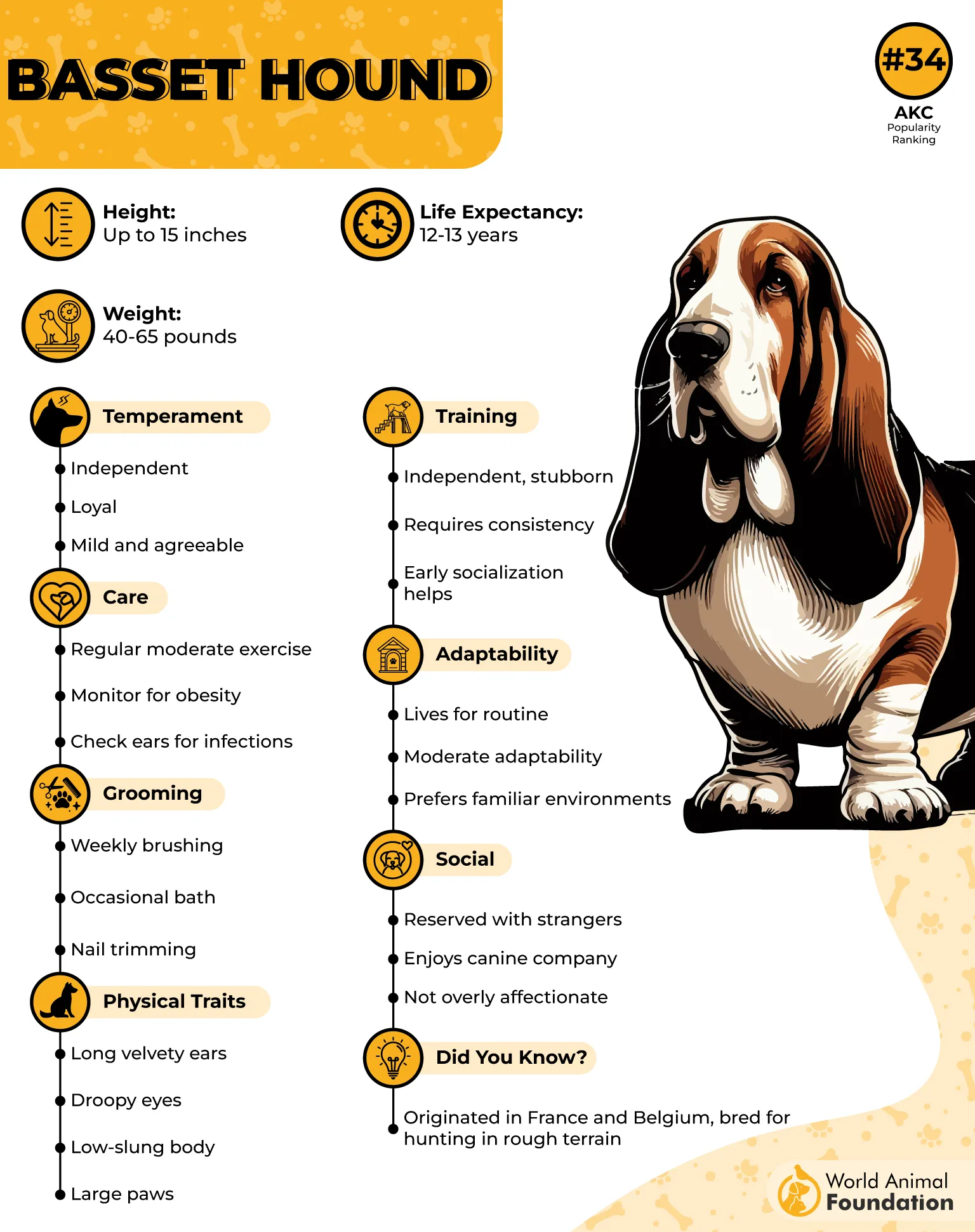
Basset Hounds are calm, laid-back, and sociable dogs that love to follow their noses. They’re not as energetic as some other breeds, preferring to take things slow and steady. Their relaxed demeanor makes them great for families, and their affectionate nature ensures they’ll always want to be near you, especially when there’s food around.
According to Hill’s Pet, Basset Hounds are known for barking frequently and often enjoy digging, thanks to their strong paws and durable nails.
Cleanup Tip: Keep a towel or bib handy at all times. And be ready to clean up after every meal. Drool has a mind of its own!
Conclusion
Excessive salivation or drooling in dogs can be a common issue, especially in certain breeds. Dogs drool for various reasons, from excitement and anticipation to health issues such as dental problems, upset stomach, or more serious conditions like dental disease. Some breeds, particularly giant breeds like the Bernese Mountain Dog breeds drool more than others due to their larger salivary glands and physical characteristics. Brachycephalic breeds, which have shorter snouts and flatter faces, may also drool excessively due to difficulty swallowing, as their unique anatomy can interfere with normal salivation.
Other dogs, particularly those with dental disease or dental problems, may experience increased drooling as a sign of pain or discomfort. Sudden excessive drooling in dogs, especially when accompanied by other symptoms like difficulty swallowing or lethargy, can indicate an underlying health issue and should be addressed by a veterinarian.
It’s important to monitor for other signs of illness, such as changes in appetite or behavior, that may point to more serious health concerns. Regular dental care and prompt attention to sudden changes in drooling can help keep your furry friend comfortable and healthy. For drooling dogs, early diagnosis and treatment are key to ensuring they remain loyal companions and free from discomfort.


